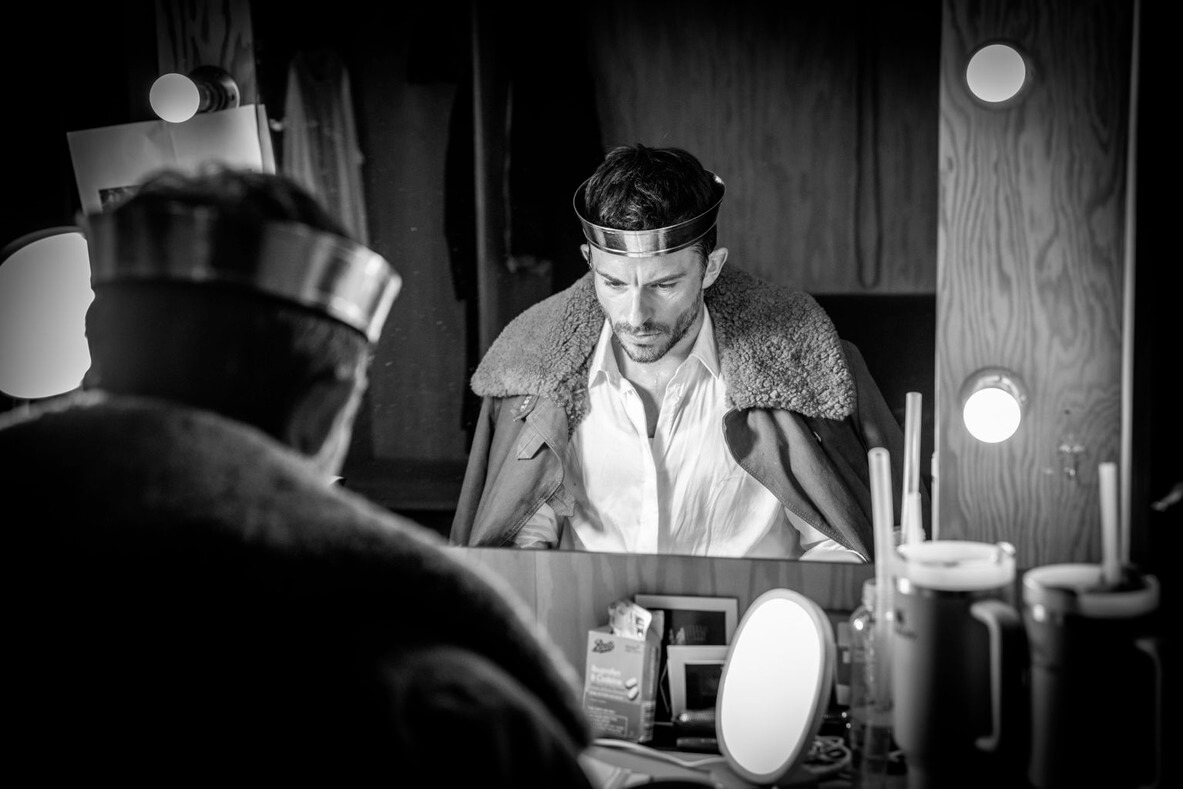Alas, that’ll keep him busy for a while as there’s scarcely an age or an era when the queer community have not been oppressed. His notable past work has been set in historical Hollywood & the war time Italian countryside but Nazi Germany has been a regular pit-stop.
In his latest play, DIFFERENT FROM THE OTHERS we begin in Weimar Germany during a comparatively liberal period before Hitler plotted his way to power. At this time Magnus Hirshfeld was able to establish an institute where he studied human sexuality and from which he sought to educate the world about the LGBT spectrum and lobby for understanding and integration.
Shame and suicide was the usual fate for gay men of the era and Hirschfeld conceived that a film might be the best way to reach a wide audience and change that. The name of that film gives the play its title.
Jeremy Booth plays the pioneer as a man of great compassion and energy and we watch him steam roller movie maker Richard Oswald into making the Picture. It’s interesting hearing them debate the most effective way of both telling an engaging story and making their point.
It’s fun too to watch them assemble the cast of eccentric figures who’ll play the roles in their silent movie. This provides a wonderful opportunity to introduce the audience to Anita Berber, an extraordinary, real life maverick performance artist, cabaret star, drunk and drug addict whose short life story could fuel a host of plays and musicals in their own right. Beth Eyre is very good at capturing her ferocity, vulnerability and passion for self-destruction in a nuanced and charismatic performance. I hope Macor will create a whole show around Anita Berber for Eyre one day. Although perhaps having her first appear openly carrying the equivalent of £10,000 of cocaine (at least) in coffee jars, in depression era Germany, suggests a little more research could have happened.
Magnus Hirschfeld’s film gets made and distributed with little incident, although there’s a lovely scene in which the director coaches the movie's lead actor into channelling his real anguish into the fictional anguish of the character he’s playing.
Then the Nazis take control of Germany and the film is banned and the negative destroyed, or is it?
Jenny Eastop’s production is stark and unfussy with minimal lighting and virtually no sound design. We do however see a couple of video clips including one of the actual scene we’ve watched being directed. This is a delicious and surreal moment in which today’s actors and those from another era reach out to each other across time and space and make a connection.
Bolted on to the historical fact are a few soap-opera twists and turns imposed by the playwright but this isn’t a documentary and manipulating the facts and their time-line to make entertaining viewing is part of his job. I happen to know a little about this period and those involved, I’m not sure the real life figure of actor Kurt Giese deserves the fictional fate the play imposes on him, but if you’re not up to speed on what actually happened, and when, then there’s no reason why the “sexing up” need bug you.
At the end the guy sitting next to me asked his friend “so, is that a true story then?” to which the answer is “mostly”. It’s certainly an engaging one, sincerely executed, that shines a spotlight on a fascinating, often forgotten, corner of LGBT history.

 I’ve known the playwright Claudio Macor for some years, ever since I directed one of his early plays. Since then he’s commendably amassed a significant body of work in which he uncovers dark moments from the history of gay oppression and vividly dramatises them.
I’ve known the playwright Claudio Macor for some years, ever since I directed one of his early plays. Since then he’s commendably amassed a significant body of work in which he uncovers dark moments from the history of gay oppression and vividly dramatises them.


 I was looking forward to this because reviews and word of mouth about American writer Annie Baker’s recent plays at the National Theatre, JOHN and the THE FLICK were so blisteringly good and I’d missed both.
I was looking forward to this because reviews and word of mouth about American writer Annie Baker’s recent plays at the National Theatre, JOHN and the THE FLICK were so blisteringly good and I’d missed both.